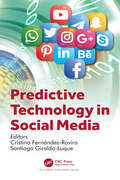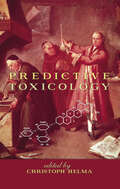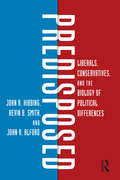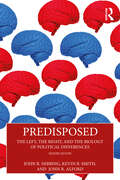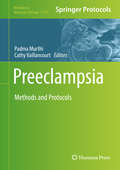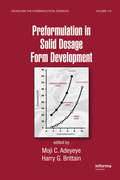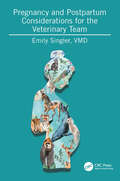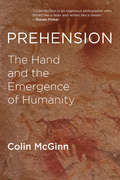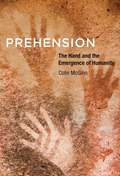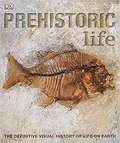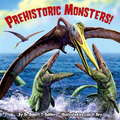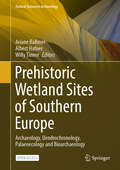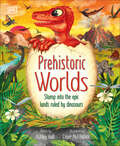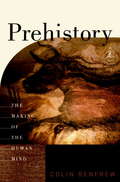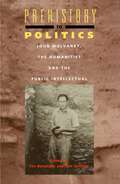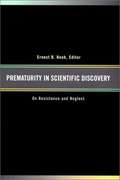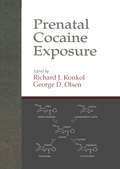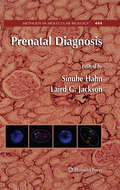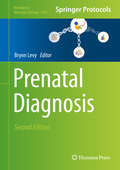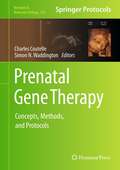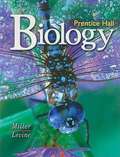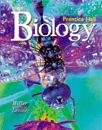- Table View
- List View
Predictive Technology in Social Media
by Cristina Fernández-RoviraCan behaviour on social media predict future purchase patterns? Can what we click on social media foresee which political party will we vote for? Can the information we share on our wall foretell the next series I might want to watch? Can the likes on Instagram and Facebook predict the time one will spend on digital platforms in the next hour? The answer is no longer science fiction. It points to the ability of mainstream social media platforms such as Facebook and Twitter to be able to deliver specialised advertising services to highly targeted audience segments controlled by the billions of devices that flood our daily lives. At the same time, it highlights a more relevant problem: can social media guide, suggest or impose a certain behaviour or thought? Everything seems to indicate that they can do it.Predictive Technology in Social Media comprises 10 essays that reflect on the power of the predictive technology of social media in culture, entertainment, marketing, economics and politics. It shows, from a humanistic and critical perspective, the predictive possibilities of social media platforms, as well as the risks this entails for cultural plurality, everyday consumption, the monopolistic concentration of the economy and attention, and democracy. The text is an invitation to think, as citizens, about the unbridled power we have ceded to digital platforms. A new voice to warn about the greatest concentration of communicative power ever seen in the history of humanity.
Predictive Toxicology
by Christoph HelmaA comprehensive overview of techniques and systems currently utilized in predictive toxicology, this reference presents an in-depth survey of strategies, algorithms, and prediction methods to select, calculate, and represent the features and properties of chemical structures in biological systems. It provides sources of high-quality toxicity data, the most important commercial and noncommercial predictive toxicology programs, and advanced technologies in computational chemistry, biology, statistics, and data mining. Predictive Toxicology explores applications that go beyond classical structure-activity relationships and discusses programs such as OncoLogic, META, MC4PC, PASS, and lazar.
Predisposed: Liberals, Conservatives, and the Biology of Political Differences
by Kevin B. Smith John R. Alford John R. HibbingBuried in many people and operating largely outside the realm of conscious thought are forces inclining us toward liberal or conservative political convictions. Our biology predisposes us to see and understand the world in different ways, not always reason and the careful consideration of facts. These predispositions are in turn responsible for a significant portion of the political and ideological conflict that marks human history. With verve and wit, renowned social scientists John Hibbing, Kevin Smith, and John Alford—pioneers in the field of biopolitics—present overwhelming evidence that people differ politically not just because they grew up in different cultures or were presented with different information. Despite the oft-heard longing for consensus, unity, and peace, the universal rift between conservatives and liberals endures because people have diverse psychological, physiological, and genetic traits. These biological differences influence much of what makes people who they are, including their orientations to politics. Political disputes typically spring from the assumption that those who do not agree with us are shallow, misguided, uninformed, and ignorant. Predisposed suggests instead that political opponents simply experience, process, and respond to the world differently. It follows, then, that the key to getting along politically is not the ability of one side to persuade the other side to see the error of its ways but rather the ability of each side to see that the other is different, not just politically, but physically. Predisposed will change the way you think about politics and partisan conflict. As a bonus, the book includes a "Left/Right 20 Questions" game to test whether your predispositions lean liberal or conservative.
Predisposed: The Left, The Right, and the Biology of Political Differences
by Kevin B. Smith John R. Alford John R. HibbingThis thoughtfully updated revision of a classic text sheds new light on the potential sociological and biological differences that result in deep, seemingly unbridgeable political divisions.Renowned social scientists and experts in biopolitics, John R. Hibbing, Kevin B. Smith, and John R. Alford present overwhelming evidence that political opinion is shaped not just by cultural background or information bias but is rather the result of diverse psychological, physiological, and genetic traits. This new edition shifts the emphasis from differences between the political left and the right (liberals and conservatives) as they have traditionally been understood and explores specific brands of liberalism and conservatism such as ardent supporters of politicians such as Donald Trump.An essential read for students and scholars of political psychology and party politics, this book invites the reader to reconsider their perspectives on public opinion and partisan conflict.
Preeclampsia
by Cathy Vaillancourt Padma MurthiThis volume presents the latest developments and techniques used to study the physiopathology, diagnosis, and treatment of pre-eclampsia. Written for clinicians, obstetricians, basic scientists, researchers, and students the chapters in this book provide methods to study placental function using in vitro and ex vivo model systems, comprehensive genetic analysis of pre-eclampsia, identifying critical angiogenic factors associated with the development of pre-eclampsia, and controlled experiments that investigate potential therapies. Written in the highly successful Methods in Molecular Biology series format, chapters include introductions to their respective topics, lists of the necessary materials and reagents, step-by-step, readily reproducible laboratory protocols, tips on troubleshooting and avoiding known pitfalls, as well as a description of the limitations and advantages of the described techniques.Cutting-edge and comprehensive, Pre-Eclampsia: Methods and Protocols is a valuable resource for anyone interested in learning more about the critical role of the placenta in the maternal-fetal relationship.
Prefoldins: the new chaperones (Advances in Experimental Medicine and Biology #1106)
by Nabil DjouderThis book reviews recent work on molecular chaperones of the prefoldin family from their discovery in Archaea to the basic clarification of their structure. Even though, there is still a lot to investigate in order to understand the roles and functions of prefoldins, some preliminary work suggests their contribution in assembly and activation of a variety of macromolecular complexes. Hence, the reader is introduced to recent structural findings via cryo-electron microscopy and to the importance of this particular group of proteins in health and disease. This book also discusses the particular structure of the URI prefoldin-like complex. In addition, recent developments in the generation of URI mouse models speculate on the functions and emerging roles of the URI prefoldin-like complex in various cellular processes. This novel protein complex represents a unique cellular machinery, which molecular basis of its activity still remains to be determined.This work is thus a guide to help researchers in the field to have a more comprehensive and critical view of the prefoldin world.
Preformulation in Solid Dosage Form Development (Drugs and the Pharmaceutical Sciences)
by Harry G. Brittain Moji Christianah AdeyeyeDuring the onset of any clinical trial there are many factors and variables to consider. Funding, time restraints, and regulatory agency guidelines are factors that often influence which variables will be studied, leaving other important information out of the study. Preformulation in Solid Dosage Form Development covers every topic of critical imp
Pregnancy and Postpartum Considerations for the Veterinary Team
by Emily SinglerPrecautions often apply to pregnancy in any workplace, but being a vet in practice presents additional specific risks. There are concerns and uncertainty about potential hazards, from radiation and inhalant anesthesia exposure, to zoonoses, and the additional mental stress in a profession that already carries high suicide risk. This book reviews considerations for professionals in clinical veterinary medicine (large and small animal) while pregnant and after giving birth. Veterinarian and veterinary writer, consultant, and mentor Dr Emily Singler speaks directly to veterinary team members (veterinarians, technicians, CSRs, assistants, students) who are pregnant or plan to become pregnant. She delivers scientific information on the specific risks to the mother and baby that may be encountered during pregnancy while working in veterinary medicine, with some of her own and others’ experiences to add perspective and humor. The book also covers topics related to mental health challenges, announcing a pregnancy and planning for parental leave, navigating the fourth trimester, and returning to work. We hope that having read this book, veterinary professionals – whether pregnant or working with pregnant colleagues – will feel better supported and empowered to make informed decisions.
Prehension: The Hand and the Emergence of Humanity
by Colin McGinnIn praise of the hand: A philosopher considers the crucial role of the hand in human evolution, particularly with respect to language. This book is a hymn to the hand. In Prehension, Colin McGinn links questions from science to philosophical concerns to consider something that we take for granted: the importance of the hand in everything we do. Drawing on evolutionary biology, anatomy, archaeology, linguistics, psychology, and philosophy, among other disciplines, McGinn examines the role of the hand in shaping human evolution. He finds that the development of our capacity to grasp, to grip, to take hold (also known as prehension) is crucial in the emergence of Homo sapiens. The human species possesses language, rational thought, culture, and a specific affective capacity; but there was a time when our ancestors had none of these. How did we become what we so distinctively are, given our early origins? McGinn, following Darwin and others, calls the hand the source of our biological success. When our remote ancestors descended from trees, they adopted a bipedal gait that left the hands free for other work; they began to make tools, which led to social cooperation and increased brain capacity. But McGinn goes further than others in arguing for the importance of the hand; he speculates that the hand played a major role in the development of language, and presents a theory of primitive reference as an outgrowth of prehension. McGinn sings the praises of the hand, and evolution, in a philosophical key. He mixes biology, anthropology, analytical philosophy, existential philosophy, sheer speculation, and utter amazement to celebrate humans' achievement of humanity.
Prehension: The Hand and the Emergence of Humanity
by Colin McginnThis book is a hymn to the hand. In Prehension, Colin McGinn links questions from science to philosophical concerns to consider something that we take for granted: the importance of the hand in everything we do. <P><P>Drawing on evolutionary biology, anatomy, archaeology, linguistics, psychology, and philosophy, among other disciplines, McGinn examines the role of the hand in shaping human evolution. He finds that the development of our capacity to grasp, to grip, to take hold (also known as prehension) is crucial in the emergence of Homo sapiens. The human species possesses language, rational thought, culture, and a specific affective capacity; but there was a time when our ancestors had none of these. How did we become what we so distinctively are, given our early origins? McGinn, following Darwin and others, calls the hand the source of our biological success. When our remote ancestors descended from trees, they adopted a bipedal gait that left the hands free for other work; they began to make tools, which led to social cooperation and increased brain capacity. But McGinn goes further than others in arguing for the importance of the hand; he speculates that the hand played a major role in the development of language, and presents a theory of primitive reference as an outgrowth of prehension. McGinn sings the praises of the hand, and evolution, in a philosophical key. He mixes biology, anthropology, analytical philosophy, existential philosophy, sheer speculation, and utter amazement to celebrate humans' achievement of humanity.
Prehistoric America: An Ecological Perspective
by Betty MeggersDuring the past 30 years, the relationship between humans and the environment has changed more drastically than during any previous period in human history. Local sustainable exploitation of natural resources has been overridden by global interests indifferent to the detrimental impact of their activities on local environments and their inhabitants. Increasingly efficient technology has reduced the need for human labor, but improved medical treatment favors reproduction and survival, creating a growing imbalance between population density and food supply. Rapid transportation is introducing alien species to distant terrestrial and aquatic environments, where they displace critical elements in the local food chain.This succinct and profusely illustrated volume applies evolutionary and cultural theory to the interpretation of prehistoric cultural development in the western hemisphere. After reviewing cultural development in Mesoamerica and the central Andes, Meggers examines adaptation in North and South American regions with similar environments to evaluate the influence of adaptive constraints on cultural content.What made the human species dominant on the planet is the substitution of cultural behavior for biological behavior. Prehistoric Americans applied this ability to develop sustainable relationships with their environments. Many succeeded and others did not. Paleoclimatic reconstructions can be compared with archeological sequences and ethnographic descriptions to identify cultural behavior responsible for the difference. Comparison of the responses of Amazonians and Mayans to episodes of severe drought provides useful insights into what we are doing wrong.
Prehistoric Life: The Definitive Visual History of Life on Earth
by Dorling Kindersley Publishing StaffWith an extensive catalog at its heart, Prehistoric Life profiles hundreds of fascinating species in incredible detail. The story starts in earnest 3.8 billion years ago, with the earliest-known form of life on Earth, a bacteria that still exists today, and journeys through action-packed millennia, charting the appearance of new life forms as well as devastating extinction events. Of course, the ever-popular and endlessly intriguing dinosaurs feature large, but Prehistoric Life gives you the whole picture, and the plants, invertebrates, amphibians, birds, reptiles, and mammals that are the ancestors of today's species also populate its pages, making this book unprecedented in its coverage of prehistory. <P><P>Specially commissioned artworks use cutting-edge technology to render species in breathtakingly realistic fashion, with astonishing images of prehistoric remains, such as skeletons and fossils, to complete the story. To put all the evidence in context, the concept of geological time is explored, as is the classification of species and how the evidence for their evolution is preserved and can be deciphered.
Prehistoric Monsters! (Pictureback(R))
by Robert T. BakkerA super-simple introduction to prehistoric animals, from the first weird and wonderful life forms on Earth to the earliest Ice Age humans-and much, much more.
Prehistoric Wetland Sites of Southern Europe: Archaeology, Dendrochronology, Palaeoecology and Bioarchaeology (Natural Science in Archaeology)
by Ariane Ballmer Albert Hafner Willy TinnerThis is an open access book. Unique in its scope, this book provides for the first time a Southern European perspective on prehistoric wetland settlements and their natural environment. These are dwellings originally built in humid locations, i.e. on shores and in shallow water areas of lakes, bogs, marshes, rivers, estuaries and lagoons. The relevant archaeological remains are in most cases waterlogged and offer outstanding preservation conditions for organic materials and are moreover in close proximity to uninterrupted natural archives (e.g. lake or mire sediments), which allows for a broad range of transdisciplinary research approaches. The sites discussed in this book date from the Neolithic and the Bronze Age (c. 5500–1000 BC), and are located in nine countries of Southern Europe, i.e. Spain, France, Italy, Slovenia, Croatia, North Macedonia, Albania, Greece and Bulgaria. Four dimensions of prehistoric wetland settlements are explored in the book – the archaeological, the dendroarchaeological, the palaeoecological and the bioarchaeological: Part I is dedicated to archaeology, i.e. the excavation of settlement remains, their transdisciplinary exploration as well as their interpretation; Part II deals with dendroarchaeology and its contribution to the understanding of occupation sequences and regional chronologies; and Part III concerns uninterrupted off-site palaeoecological records of past ecosystem change, including human–environment interactions, as well as bioarchaeological on-site approaches to subsistence strategies and land use practices. Prehistoric Wetland sites of Southern Europe showcases how different disciplines and areas of expertise from the humanities and the natural sciences meet on an equal footing to elaborate coherent pictures of the past. Besides a cross-section of research statuses of different archaeological sites, currently ongoing research as well as novel, hitherto unpublished case studies and findings are made accessible to the international research community. Drawing on a wide range of expert contributions from both archaeology and the natural sciences, this book targets scholars, professionals, and students from the fields of prehistoric archaeology and palaeo-sciences, and is furthermore of interest to cultural-heritage stakeholders.
Prehistoric Worlds: Stomp Into the Epic Lands Ruled by Dinosaurs (The Magic and Mystery of the Natural World)
by Ashley HallEnter the prehistoric world for an incredible four-billion year journey in this book for young history and dinosaur enthusiasts.Take children on a fascinating journey through history, showing them how and where their favorite dinosaurs came to exist, and how events from billions of years ago are still affecting our natural world today.Packed with dynamic historical content, Prehistoric Worlds combines illustrations and photos to help young historians aged 7-9 learn all about the period that shaped our planet. Meet favorite dinosaurs, from the terrifying T.Rex to the spiky stegosaurus; nurture your inner paleontologist by learning about prehistoric plant and animal fossils; and discover destructive extinction events that changed the world forever.Inside this dinosaur book for children, you&’ll find: - A wide range of prehistoric life and its chronology, including plants and animals from this period, and the continental shifts that shaped our world today.- Information on natural history written by palaeontologist and scientist Ashley Hall.- Illustrations and expert CGI imagery showing different types of dinosaur species.Plants flourish, birds evolve, and dinosaurs charge across the pages of this lively and colorful book. From oceans teeming with life to destructive asteroids, children will discover the incredible timeline of prehistoric life that resulted in the world we recognize today.
Prehistory
by Colin RenfrewPrehistory covers human existence before written records, i. e. most of human existence. But it also refers to the discipline through which we scrutinize prehistoric times. PREHISTORY begins by looking at the discovery of a remote human past and the subsequent dramatic growth of the study of prehistory: early archaeology; geology; Darwin's ideas of evolution; cave paintings; fossil discoveries of human ancestors; museums and collections; radiocarbon dating and DNA analysis. Renfrew challenges the conventional assumption of an all-important 'human revolution' 40,000 years ago - when Homo Sapiens first appeared in Europe - and suggests that the key developments were much later. The author's case-studies range widely, from Orkney to the Balkans, from the Indus Valley to Peru, from Ireland to China, and provide fresh insights on landmark monuments such as the Egyptian pyramids, the Valley of the Kings, Stonehenge and the sacrificial burial pyramids at Teotihuacan in Mexico. The book closes with a fascinating chapter on the transition from Prehistory to History, on early writing systems.
Prehistory To Politics: John Mulvaney, The Humanities and the Public Intellectual
by Tim Bonyhady Tom GriffithsWho are public intellectuals? Why do they matter? What is the difference between an academic and an intellectual? Prehistory to Politics explores these issues by examining the life and work of John Mulvaney, one of Australia's foremost prehistorians, who has both changed our understanding of the past and made a major contribution to public debate and public policy about world heritage, archaeological and conservation practice, the function and operation of museums and the relevance of the humanities. A major campaigner for preservation of the Franklin River in the early 1980s, Mulvaney has also been an influential member of the Australian Heritage Commission and one of the most important advocates of the National Museum of Australia. He played a significant role in the campaign to preserve the site of First Government House in Sydney. Perhaps most controversially, he has been outspoken in his views about the return of skeletal remains by Australian Museums to Aboriginal people. In exploring these many facets of Mulvaney's work, Prehistory to Politics not only has much to say about the changing nature of Australian universities and the opportunities and obligations of academics but also casts new light on a wide set of archaeological, anthropological and environmental issues. It is both a history of ideas and a book about their implementation.
Prelude to Mathematics
by W. W. Sawyer"No mathematician can be a complete mathematician unless he is also something of a poet." -- K. WeierstrassIn this lively and stimulating account, noted mathematician and educator W. W. Sawyer (Professor Emeritus, University of Toronto) defines mathematics as "the classification and study of all possible patterns." It is a broad definition, but one that seems appropriate to the great scope and depth of the topic. Indeed, mathematics seems to have few boundaries, either in applications to practical matters or in its mind-stretching excursions into realms of pure abstraction.Gearing his approach to the layman whose grasp of things mathematical may be a bit precarious, Professor Sawyer offers a lucid, accessible introduction to the mathematician's cast of mind. Five well-written preliminary chapters explore the beauty, power and mysticism of mathematics; the role of math as an adjunct in utilitarian matters; and the concepts of pattern, generalization and unification as both tools and goals of mathematical thought.After developing this conceptual groundwork, the author goes on to treat of more advanced topics: non-Euclidean geometry, matrices, projective geometry, determinants, transformations and group theory. The emphasis here is not on mathematics with great practical utility, but on those branches which are exciting in themselves -- mathematics which offers the strange, the novel, the apparently impossible -- for example, an arithmetic in which no number is larger than four.Mathematicians will appreciate the author's grasp of a wide range of important mathematical topics, and his ability to illuminate the complex issues involved; laymen, especially those with a minimal math background, will appreciate the accessibility of much of the book, which affords not only a portrait of mathematics as a matchless tool for probing the nature of the universe, but a revealing glimpse of that mysterious entity called "the mathematical mind." Professor Sawyer has further enhanced this new Dover edition with updated material on group theory, appearing here in English for the first time.
Prematurity in Scientific Discovery: On Resistance and Neglect
by Ernest B. HookIn a much-discussed paper published in Scientific American in 1972, molecular biologist Gunther Stent proposed an explicit criterion for one kind of obstacle to scientific discovery. Stent suggested that it was appropriate for the scientific community to ignore such hypotheses so that it would not be overwhelmed by vast numbers of false leads. In this volume, eminent scientists, physicians, historians, social scientists, and philosophers respond to Stent's thesis.
Prenatal Cocaine Exposure
by Richard J. Konkol George D. OlsenPrenatal Cocaine Exposures addresses the timely problem of maternal cocaine abuse and its effects on exposed infants, including growth retardation, learning, cardiovascular effects, and seizures. The impact of substance abuse on this and future generations presents an ongoing challenge to medical science. This comprehensive and authoritative volume reviews both animal and clinical studies to explain implications for treatment and long-term outcomes of early exposure.Prenatal Cocaine Exposures investigates the specific role of cocaine in altering fetal development. Discussions of current studies and state-of-the-art techniques provide a basis for informed clinical decisions. Pediatricians, medical specialists, basic scientists, educators, and policy makers will all benefit from the comprehensive research gathered in this volume.
Prenatal Diagnosis
by Sinuhe Hahn Laird G. JacksonIn this thorough and state-of-the-art book, top experts provide cutting edge techniques which greatly expand the depth and scope of classical invasive prenatal diagnosis. The book features a totally unique focus on novel non-invasive approaches for prenatal diagnosis. Following the Methods in Molecular BiologyTM series format, the chapters feature step-by-step laboratory protocols, lists of the necessary materials, and tips on troubleshooting and avoiding known pitfalls.
Prenatal Diagnosis (Methods in Molecular Biology #1885)
by Brynn LevyThis second edition volume expands on the first edition with more detailed methodologies on prenatal testing and diagnosis, and also covers next-generation sequencing techniques. The chapters in this book are divided into three sections: preimplantation genetic testing, traditional prenatal testing, and non-invasive prenatal testing. This book covers topics such as molecular testing for preimplantation genetic diagnosis of single gene disorders; DNA extraction from various types of prenatal specimens; prenatal diagnosis of cystic fibrosis and Tay-Sachs disease; chromosomal SNP microarrays; and isolation of cell-free DNA from maternal plasma. Written in the highly successful Methods in Molecular Biology series format, chapters include introductions to their respective topics, lists of the necessary materials and reagents, step-by-step, readily reproducible laboratory protocols, and tips on troubleshooting and avoiding known pitfalls.Practical and thorough, Prenatal Diagnosis, Second Edition is a valuable resource for any researcher interested in reproducing these techniques in their clinical laboratories.
Prenatal Gene Therapy
by Simon N. Waddington Charles CoutelleThe emerging field of prenatal gene therapy is founded on scientific and technical advances in fetal medicine, molecular biology and gene therapy. This preclinical research subject aims at applying gene therapy during pregnancy for the prevention of human diseases caused by early onset congenital or gestation related conditions. In Prenatal Gene Therapy: Concepts, Methods and Protocols, expert researchers in the field detail many of the protocols which are now commonly used to study gene therapy, fetal medicine and medical ethics. These include detailed protocols for vector production, for breeding and husbandry of the animal models, for the surgical procedures of gene delivery in large and small animals and for the methods of gene transfer analysis. Written in the highly successful Methods in Molecular BiologyTM series format, chapters include introductions to their respective topics, lists of the necessary materials and reagents, step-by-step, readily reproducible laboratory protocols, and key tips on troubleshooting and avoiding known pitfalls. Thorough and intuitive, Prenatal Gene Therapy: Concepts, Methods and Protocols seeks to aid scientists in the further study of prenatal disease and gene therapy projects beyond the scope of fetal medicine.
Prentice Hall Biology
by Joseph Levine Kenneth MillerPrentice Hall Biology Textbook for High School
